How to check engine oil without laboratories and costs?
- July 5, 2023
- 0
Motor oils are currently one of the most pressing problems facing car owners. The usual reasoning for choice, which was relevant two years ago, is no longer valid
Motor oils are currently one of the most pressing problems facing car owners. The usual reasoning for choice, which was relevant two years ago, is no longer valid
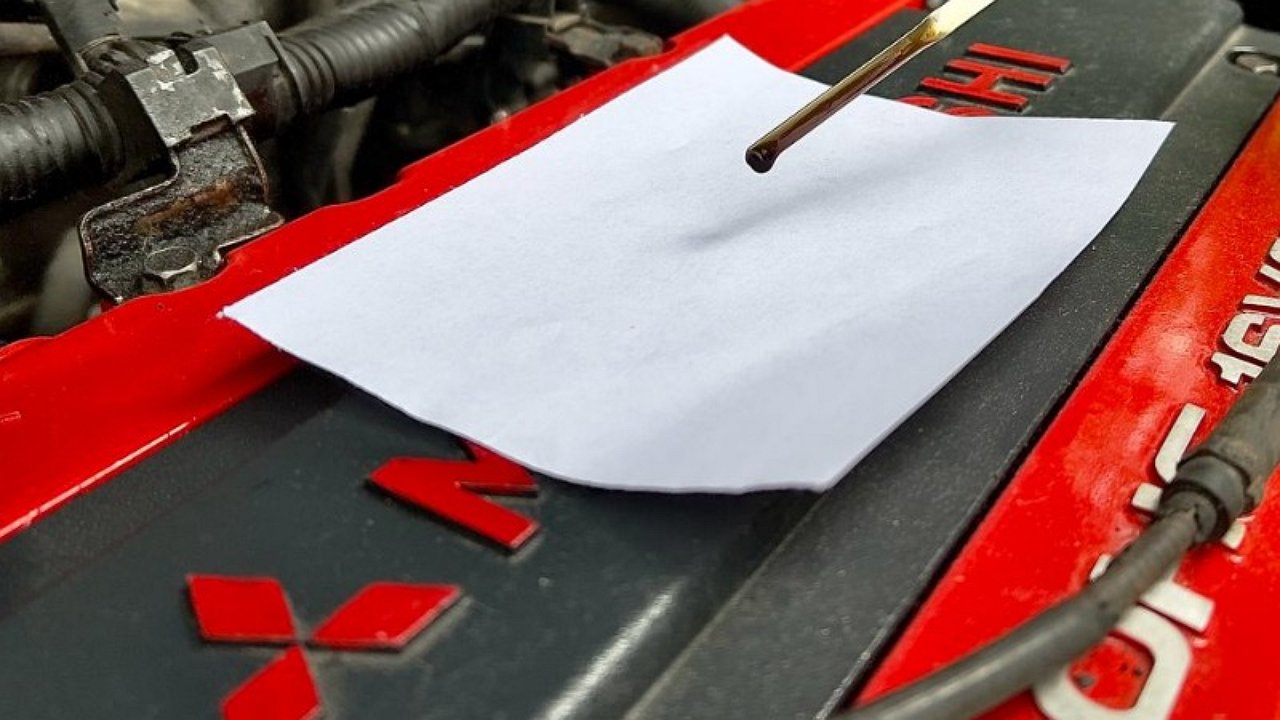
Choosing a new engine oil for your car today is a very hard job. We have to maneuver between “expensive” and “unknown”, read, between a rock and a hard place, moreover, the experience gained on the Internet is still not enough. In fact, there is only one way out: trust your own conclusions, make your choice, and then honestly bear responsibility for it. So-so perspective, let’s face it, but the other is not visible.
The domestic motor oil market is changing, so everyone from young to old is in such a curious position. The editors of the AvtoVzglyad portal and our experimental Mitsubishi Lancer were no exception. Having passed the previously described difficult path, we decided to test the Rinnol Quant M X-Drive 5w-30 engine oil, which was poured into the engine about five thousand kilometers ago. It is sufficient to summarize the first results of the test, taking into account the use in the city.
Another question is how to summarize these results and on what basis? “Tactile”, if I may say so, positive sensations: the engine runs quietly, there was practically no need to add oil, there are no knocks. Take an oil sample from the engine to the lab? This is probably the best way, but none of the motorists we know will take this route – it’s expensive. The pleasure of making sure you are right or admitting a mistake at an early stage costs from 7,500 to 18,000 rubles, which, you see, is too much stress for an empty wallet. So, let’s recall the proven methods from the experience of the old driver, by which we can sufficiently determine the quality of the oil. Moreover, such methods exist.
In the middle of the last century, SHELL developed a simple and affordable way to check the condition of the oil in the engine, based on the drip method, requiring only a piece of white paper. Read, it’s free. So, a drop of engine oil heated to operating temperature is taken from the crankcase with a dipstick and delivered to the sheet. Next, you need to wait a few hours (this is important), let the oil stain dry, then study it and already draw conclusions, based on which you can accurately assess the quality and condition of the composition.
By the way, the first conclusions can be drawn already at the stage of delivering a drop of oil to a leaf. We determine the viscosity: if the drop is stretched, falls on the paper and is not poured with water, then the oil is viscous. First response received. Now we have to wait. Three hours is enough to continue the investigation: the resulting spot is divided into zones, each of which suggests a certain result. The central part shows the presence of dirt, dust, soot, shiny metal particles in the oil. A slight darkening is normal, but a darker center, and even with shades, should be suggestive. If after the central “point” it is dark and cloudy, the oil has burned out, it does not cope with the temperature regime of the engine. Light is okay. The last thing we’re interested in is the edges of the spot. If they are equal, like a drop of water, there is no water in the engine. If ruptured, there is foreign fluid in the engine. We need to take urgent action. By the way, the drop itself can be of different sizes – the more it spreads, the more fuel is contained in the engine oil.
The course of the young fighter is completed, we begin to evaluate specifically our drop of Rinnol Quant M X-Drive 5w-30 oil: so a smooth and slow drop of lubricant on the blade calms down, the viscosity is normal. That is, the oil is in working condition and the prescribed interval will work.
The central circle is beyond doubt, there are no extra impurities, the dot is slightly darker than the main part and nothing more. The main area is still light, clay is not visible, the edges are flat. This means that you can continue to use the engine with oil poured into it, without fear of the devastating consequences.
By the way, professionals advise doing such a test at least two to three thousand kilometers in order to observe changes in dynamics. However, in five thousand kilometers we will make it, because, as we wrote above, there is no reason to worry. Also on the technical side it is still too early to draw serious conclusions, only five thousand kilometers “backward”. However, we can already safely say that the oil is thick enough, not thin and does not “burn”, but judging by the color, it regularly cleans the engine. Fuel consumption, which engine oil also affects, remains within the acceptable range, no higher and no lower than a well-known competitor that was refueled earlier.
We will strictly conduct another such drop test before replacing the oil with a new one and at the same time we will summarize the more complete results of the experiment. We will tell you in detail about the result.
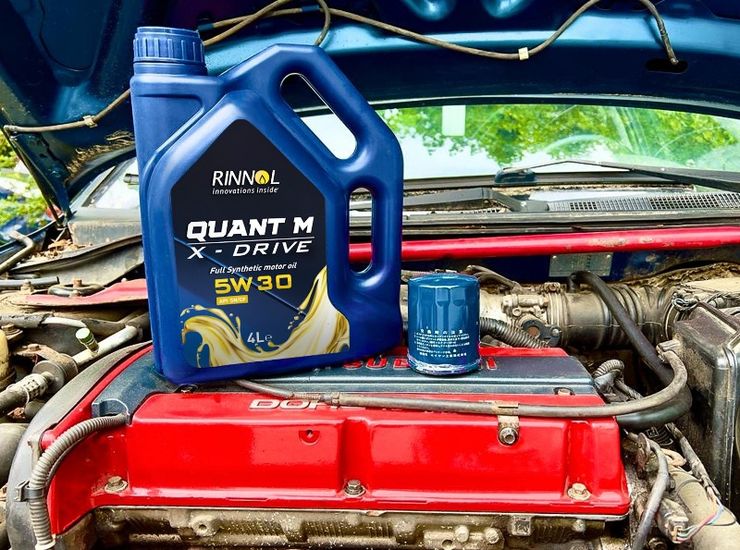
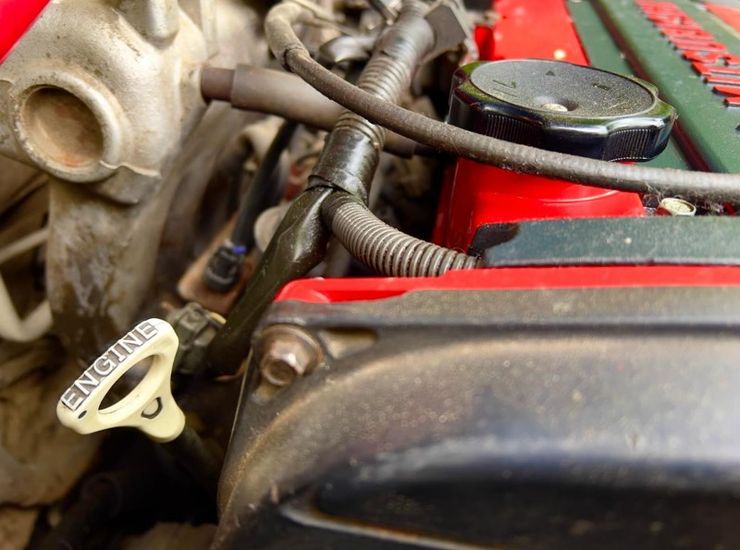
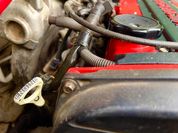
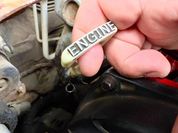
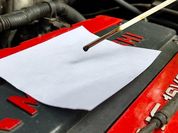
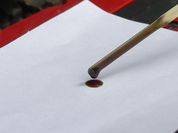
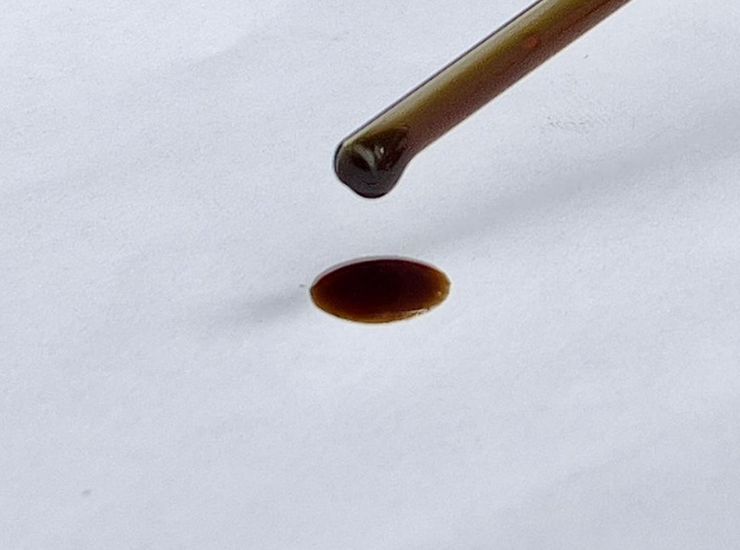
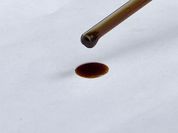
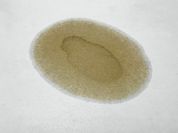
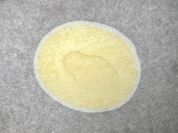
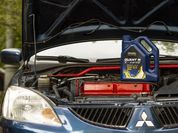
Choosing a new engine oil for your car today is a very hard job. We have to maneuver between “expensive” and “unknown”, read, between a rock and a hard place, moreover, the experience gained on the Internet is still not enough. In fact, there is only one way out: trust your own conclusions, make your choice, and then honestly bear responsibility for it. So-so perspective, let’s face it, but the other is not visible.
The domestic motor oil market is changing, so everyone from young to old is in such a curious position. The editors of the AvtoVzglyad portal and our experimental Mitsubishi Lancer were no exception. Having passed the previously described difficult path, we decided to test the Rinnol Quant M X-Drive 5w-30 engine oil, which was poured into the engine about five thousand kilometers ago. It is sufficient to summarize the first results of the test, taking into account the use in the city.
Another question is how to summarize these results and on what basis? “Tactile”, if I may say so, positive sensations: the engine runs quietly, there was practically no need to add oil, there are no knocks. Take an oil sample from the engine to the lab? This is probably the best way, but none of the motorists we know will take this route – it’s expensive. The pleasure of making sure you are right or admitting a mistake at an early stage costs from 7,500 to 18,000 rubles, which, you see, is too much stress for an empty wallet. So, let’s recall the proven methods from the experience of the old driver, by which we can sufficiently determine the quality of the oil. Moreover, such methods exist.
In the middle of the last century, SHELL developed a simple and affordable way to check the condition of the oil in the engine, based on the drip method, requiring only a piece of white paper. Read, it’s free. So, a drop of engine oil heated to operating temperature is taken from the crankcase with a dipstick and delivered to the sheet. Next, you need to wait a few hours (this is important), let the oil stain dry, then study it and already draw conclusions, based on which you can accurately assess the quality and condition of the composition.
By the way, the first conclusions can be drawn already at the stage of delivering a drop of oil to a leaf. We determine the viscosity: if the drop is stretched, falls on the paper and is not poured with water, then the oil is viscous. First response received. Now we have to wait. Three hours is enough to continue the investigation: the resulting spot is divided into zones, each of which suggests a certain result. The central part shows the presence of dirt, dust, soot, shiny metal particles in the oil. A slight darkening is normal, but a darker center, and even with shades, should be suggestive. If after the central “point” it is dark and cloudy, the oil has burned out, it does not cope with the temperature regime of the engine. Light is okay. The last thing we’re interested in is the edges of the spot. If they are equal, like a drop of water, there is no water in the engine. If ruptured, there is foreign fluid in the engine. We need to take urgent action. By the way, the drop itself can be of different sizes – the more it spreads, the more fuel is contained in the engine oil.
The course of the young fighter is completed, we begin to evaluate specifically our drop of Rinnol Quant M X-Drive 5w-30 oil: so a smooth and slow drop of lubricant on the blade calms down, the viscosity is normal. That is, the oil is in working condition and the prescribed interval will work.
The central circle is beyond doubt, there are no extra impurities, the dot is slightly darker than the main part and nothing more. The main area is still light, clay is not visible, the edges are flat. This means that you can continue to use the engine with oil poured into it, without fear of the devastating consequences.
By the way, professionals advise doing such a test at least two to three thousand kilometers in order to observe changes in dynamics. However, in five thousand kilometers we will make it, because, as we wrote above, there is no reason to worry. Also on the technical side it is still too early to draw serious conclusions, only five thousand kilometers “backwards”. However, we can already safely say that the oil is thick enough, not thin and does not “burn”, but judging by the color, it regularly cleans the engine. The fuel consumption, which engine oil also affects, remains within the acceptable range, no higher and no lower than a known competitor that was refueled earlier.
We will strictly conduct another such drop test before replacing the oil with a new one and at the same time we will summarize the more complete results of the experiment. We will tell you in detail about the result.
Source: Avto Vzglyad
Donald Salinas is an experienced automobile journalist and writer for Div Bracket. He brings his readers the latest news and developments from the world of automobiles, offering a unique and knowledgeable perspective on the latest trends and innovations in the automotive industry.